
Science fiction and technology writer
Popular blog posts
Recent forum posts
Discussion Forum
Discussion forumShowing topics tagged as: Gaming
How is Facebook's Metaverse doing? Worse than buggy, it's lonely, boring, and bleak
Post #: 300
Post type: Blog post
Date: 2023-03-21 20:15:20.000
Author: Jeremy Reimer
Tags: gaming metaverse
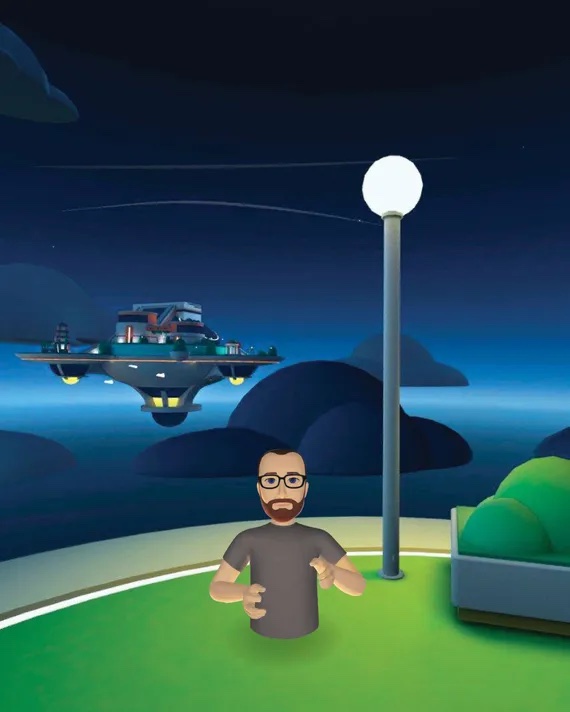
In a previous article I posted my thoughts on Facebook's sad attempt at a Metaverse, and how it was already failing shortly after launch.
Some time has passed, and I have an update, courtesy of journalist Paul Murray: https://nymag.com/intelligencer/article/mark-zuckerberg-metaverse-meta-horizon-worlds.html
"After a certain number of hours in Zuckerberg’s personal universe, you find yourself asking questions like “Does he think this is good?” Looking through my notes, I keep coming across words like diminished, depleted, wan, bleak. The beta-ness of it all is mystifying. If I were Zuckerberg and I’d spent $36 billion building a metaverse, I’d make sure when I launched it there was something to do. Why would he go to all the trouble of building a virtual world, then leave it to the users to make their own fun, as if they were at a holiday camp in the ’80s?"
...
"I can’t stress how unlike a party house the Party House is. It’s not just the amateurish, low-tech design; it’s not just the sparse attendance and desultory interactions. It’s the total absence of mood. It reminds me of when I’d try to get together with friends over Zoom during lockdown — everyone’s face appearing in a box in the grid like contestants in some bleak, prizeless game show, the total absence of physicality making us feel more distant from one another than ever."
Bleak, deserted, lonely. I'm glad Paul spent some time in Facebook's Metaverse so that I don't have to.
Views: 2654
Facebook's Metaverse is already failing
Post #: 295
Post type: Blog post
Date: 2022-10-12 17:40:26.000
Author: Jeremy Reimer
Tags: gaming metaverse
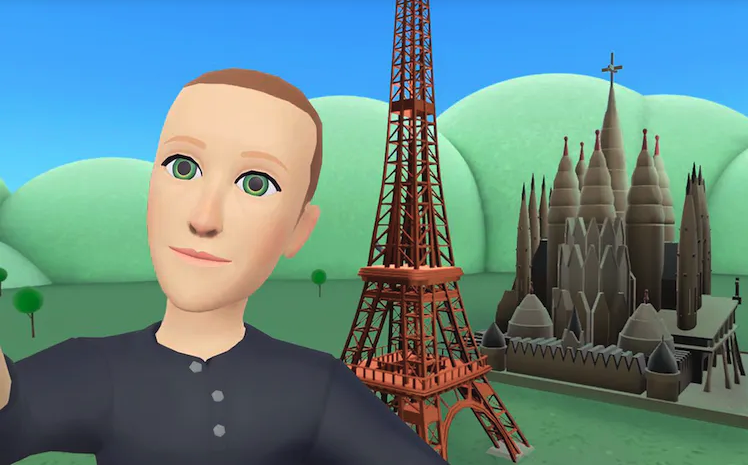
Sorry, Mark, nobody wants to join you here.
In a previous post called Why the Metaverse will never happen, I dissected the idea of the Metaverse as an impossible and ill-defined dream. Basically, the Metaverse has to be universal (like the Internet itself) or it isn’t a Metaverse at all, but just another Second Life clone. But tech companies will never agree to adopt a common framework that they don’t own and can’t fully monetize.
The other, more serious problem with a Metaverse is that nobody can actually define what it is. Mark Zuckerberg, in his ebullient announcement last year, said it would be a world “as detailed and convincing as this one” and that inside, “you’re going to be able to do almost anything you can imagine.”
This last sentence is a huge giveaway that Facebook’s Metaverse will fail. This is the same phrase spoken by dozens of naive and inexperienced wannabe game developers, who go on Kickstarter and announce an amazing new Massively Multiplayer Online (MMO) game where “you’ll be able to do anything.” Every single one of these Kickstarters, even the ones that reach their funding goals, end up failing spectacularly. The latest fiasco, DreamWorld, is a perfect example.
“Doing anything” is another way of saying “I have no idea what this game will be.” Games are fun because of constraints and rules. Take golf, for example. If you could just pick up the ball and drop it directly in the hole, nobody would bother playing it. But when you add the constraint of hitting the ball with a club, and add a scoring system, suddenly it’s interesting.
Not everything has to be a game, of course. Second Life, released in 2003, was the first successful attempt to make a virtual world that had no real objectives, other than building a world and exploring it with other people. But Second Life peaked in 2009 when it hit 88,000 concurrent online users. It’s still around, but these days nobody expects it to become the future of anything.
More recently, Minecraft was a much larger hit, capturing the imaginations of a huge portion of kids and teenagers. But Minecraft is definitely a game — it has very specific rules for breaking down blocks, finding resources, and using these resources to craft different types of blocks. There are even enemies to fight. It knows exactly what it wants to be and it does it very well. Countless Minecraft clones have been attempted, but they have all failed because “Minecraft, but better” isn’t a design document.
Getting back to Facebook’s Metaverse, it’s clear that Zuckerberg is serious about his effort. He’s spent $10 billion and hired 10,000 engineers. Surely, with this massive amount of resources, his company would have delivered something great, right? Right?
Well, as it turns out, what they’ve produced (which they call Horizon Worlds) is ill-defined, boring, buggy, and nobody wants to play it. According to leaked memos, the “aggregate weight of papercuts, stability issues, and bugs is making it too hard for our community to experience the magic of Horizon. Simply put, for an experience to become delightful and retentive, it must first be usable and well crafted.”
This is another giveaway that the folks building Horizon have no idea what they are actually trying to build. If a game is great, people will play it, even with crazy bugs. Skyrim shipped with tons of bugs, but the game was awesome from day one.
Horizon clearly isn't awesome. Second Life, and more recently, VR Chat, gained popularity because they offered a way for people to express unusual sexual desires in a safe place. But Mark Zuckerberg doesn't want any sex in his city. When people started harassing women in Horizon by trying to grope them between the legs, Facebook's answer wasn't to figure out how to deal with harassment. It was to permanently remove everybody's legs.
You can do anything you want. Except have legs, apparently.
Even Facebook employees don’t want to play Horizon. “For many of us, we don’t spend that much time in Horizon and our dogfooding dashboards show this pretty clearly,” another memo read. “Why is that? Why don’t we love the product we’ve built so much that we use it all the time? The simple truth is, if we don’t love it, how can we expect our users to love it?”
How indeed. The truth is simple: if the product was any good, people would play it. When Origin Systems was making the original Wing Commander, the entire company couldn’t stop playing the game. That’s how they knew it was going to be a hit. When Blizzard was building World of Warcraft, the company could barely get any work done because so many employees wanted to play it.
Facebook’s management, on the other hand, has decided that the way to fix their boring game is to force their employees to play it. “Everyone in this organization should make it their mission to fall in love with Horizon Worlds,” a recent memo read. “You can’t do that without using it. Get in there.”
The end result of all this will be a ton of wasted money and a product that may end up getting forced on people in order for senior management to report rosy numbers. But when the dust has settled, no amount of promotion and bundling will get people to keep playing something they don’t want to play.
UPDATE: Since this article was published, Facebook has triumphantly announced that Legs are coming soon. Are you excited? The message went over about as well as could be expected.
Views: 3301
Why the Metaverse will never happen (it’s not about the technology)
Post #: 287
Post type: Blog post
Date: 2022-02-16 18:03:38.000
Author: Jeremy Reimer
Tags: gaming metaverse

If you’ve been following technology news over the past six months, you’ve undoubtedly heard the term “Metaverse” being promoted from many sources. Last October, Facebook announced it was changing its name to “Meta”, and Mark Zuckerberg released a video explaining how the company was going to start building “the Metaverse” and how awesome it was all going to be.
But what exactly is the Metaverse? Do we have to care about it? Is it going to affect our lives in a significant way? Are we going to miss out if we don’t somehow invest in the Metaverse right now?
What is the Metaverse?
The Metaverse isn’t well defined, which is the first red flag. But I’ll take a stab at it. In Zuckerberg’s video, he outlined some of the main attributes:
- It’s a universal, infinitely-extensible, shared virtual world
- The main way you interact with it is through Virtual Reality (VR) goggles
- You appear in the Metaverse as an “avatar” which can look like you or anything else
- You have a universal “account” in the Metaverse and can purchase and trade virtual goods
- In the Metaverse, you can play games, but also go to virtual school, have virtual conferences, go to virtual concerts, and have virtual weddings
One main aspect of the Metaverse is that your avatar and your virtual possessions have to be able to move seamlessly between different virtual worlds and experiences. If you couldn’t, it would just be a “Verse”, or more accurately, just a video game. Second Life, released in 2003, had avatars, accounts, virtual goods, virtual schools and conferences, and even virtual weddings. It was culturally significant enough to have an episode of “The Office” dedicated to it. But you wouldn’t call Second Life “the Metaverse”, even if you attached VR to it (which is possible today with a bit of fiddling and some special software).
No, the main issue that prevents Second Life, or Fortnite, or World of Warcraft, from being called the Metaverse, is that all these virtual worlds are isolated from each other. You can’t bring your Orc Warrior into Fortnite. Zuckerberg even admitted in his video that “no one company can build the Metaverse”.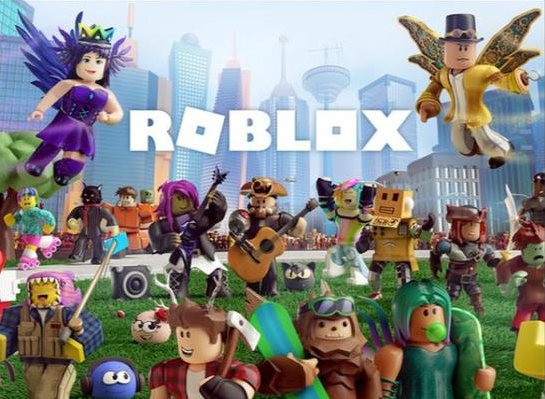
Some companies have already tried. Roblox, a hugely popular children’s game, lets players bring their avatar into thousands of different “experiences”, which are mostly simple games designed by other children. But Roblox is not the Metaverse either. You can’t take your Roblox avatar into a different game. Nor can you use the virtual items you paid for anywhere except for Roblox.
What would it look like if you could? Most advocates of the Metaverse point to books and movies like Ready Player One, a dystopian science-fiction story where there is a single persistent world that everyone plays in all the time. (It’s worth noting here that the bad guys in the story operate their own completely independent virtual world that nobody seems to play, so they are hell-bent on cheating in order to wrest control of this dominant Metaverse away from its founders).
Apart from the fact that nobody should want to live in a dystopia, there are a few problems with wanting to create a real-life Ready Player One:
Problem One: nobody wants to play only one game
The Metaverse presumes that a single company operating a single video game platform would become so dominant that nobody would want to play anything else. In real life, new video games come out all the time, and trends shift back and forth. Fortnite came out of nowhere and became hugely popular, but not everyone plays Fortnite. Why would gamers want to limit themselves to a single title forever?
Problem Two: having different types of games interoperate is impossible
Nobody (least of all the author) ever explains how the gameplay in Ready Player One would be balanced, or even work at all. You can purchase virtual guns and combat armor, so how would that work in a fantasy setting, or a medieval farming simulator? There seem to be no limits on jumping from world to world. If there were, and you could lock out the sci-fi combat troops from your farming game, how is that different from just playing a separate game entirely?
Problem Three: pay-to-win is no fun and people hate it
The integration of items that cost real-world money into games has always been a disaster whenever any games company has tried it. Blizzard’s Diablo III launched with a “real money auction house” where players could sell their loot to other players. This ended up destroying the fun of the game, because the best move was always to buy the most powerful equipment at the start and roll through all the enemies unimpeded, rather than, you know, playing the game. Everyone hated it and Blizzard quickly ripped it out of Diablo forever.
But the Metaverse implies a real money auction house, not just for one game, but for everything. The end result would be that rich people would win all the time and everyone else would get killed by the rich people over and over again, with no chance of victory. How is this fun? Why would anyone play this?
Problem Four: people don’t want to spend all day in VR
There is no evidence that people want to spend all of their time in virtual reality. I have a VR headset myself, and I really enjoy playing games on it. Mostly I play quick movement games like Beat Saber, or larger role-playing adventures like the VR version of Fallout 4. But I find playing VR to be tiring, so I limit my game sessions to about an hour or so. It’s hard on the eyes, and most games can’t be played sitting down. Even if headsets get lighter and more powerful, which they will, I don’t think people will want to be in VR all day, every day. I certainly don’t, and I love the technology. So a “Metaverse” that is VR-only will have a limited audience.
Problem Five: companies will never cooperate to make one company rich
In order for “many companies” to create a single Metaverse that everyone plays in, it would require that one company (Zuckerberg is hoping it’s Facebook) creates a virtual universe so attractive that everyone else would give up trying to make their own games and just make content for Facebook’s universe.
This is the Roblox business model. It works when the labor is cheap or free (in this case, it’s literally child labor) but it doesn’t scale past Roblox’s very limited and simple games. Nobody is going to want to make Diablo V or Fortnite II, spending hundreds of millions of dollars to do so, and then hand over 95% of their profits to Facebook.
The only way this could work is if somehow all companies could agree to a single standard for the Metaverse to use. This would not only require a standard game engine (say, the Unreal Engine owned by Fortnite creator Epic Games) but also a huge list of standard ways that the game would be built and how every part would talk to each other. These standards would have to be agreed upon and could never change once they were, otherwise separate parts of the Metaverse would immediately break and stop working with each other.
This, too, will never happen. Standards take years, sometimes decades to finalize, and what large company would want to wait around for this to happen, when they could build their own Metaverse right now and keep all the profits to themselves?
So where do we go from here?
Make no mistake, companies both big and small are all building their own “Metaverse” products, and none of them will ever interoperate with each other. Why would they? Why would a company allow you to pay some other company for a virtual item or avatar, and then let you use it for free in their game, costing them time and money to support? They won’t.
So who is building a Metaverse right now? Facebook and Microsoft have committed to building one of their own, which by definition will not be Metaverses since they won’t interoperate with each other. Google and Apple will probably be right behind. In the meantime, Fortnite and Roblox exist, along with tons of smaller games that are each their own persistent world. The independently-built VR Chat is the most popular place to virtually hang out in virtual reality right now, despite Facebook releasing the first version of their own virtual reality chat program. People go where other people hang out. Facebook is popular because so many people use it, but this popularity did not transfer over to VR chatting. It’s just like when Microsoft released a phone that ran Windows, and people ignored it because it wasn’t as popular as the iPhone or Android.
But what about Web 3.0?
Some folks are pretending that a new thing called “Web 3.0” will somehow mean that all the problems I’ve listed above will magically go away and the Metaverse will arise naturally from the power of blockchain and cryptocurrency. This definitely won’t happen. Explaining why is another whole article, but for now I’ll point out that all blockchain and crypto adds to the discussion is a very slow public database that can’t ever be changed and is ridiculously expensive to operate. It doesn’t solve the interoperability issue (blockchain games currently cannot and will not ever work with each other) and it doesn’t solve the balance issue, or the corporate motivation issue, or any of the other issues I’ve brought up. Most of these “blockchain” games don’t even run on blockchains at all, because they are too expensive to use. They just loosely tie themselves to a new crypto coin or new non-fungible tokens, so they can get some quick investment money. Most of them are just scams.
To sum up:
- Facebook is building something it calls a Metaverse
- So are a bunch of other companies
- None of these games/social spaces/virtual worlds will ever interoperate with each other, because companies have no financial incentive to make this work
- Therefore, none of these worlds will ever be a Metaverse
- Therefore, the Metaverse won’t ever happen
Here’s my advice for you, if you’re thinking you need to invest into “The Metaverse” today. You don’t. Play the games you want, in VR or not in VR. Use the chat programs you want, in VR or not in VR. Don’t worry about a universal dystopia that can never happen. You don’t have to sell your soul to Facebook, or anyone else.
Views: 2697
Introducing Arcade Dreams
Post #: 281
Post type: Blog post
Date: 2020-10-23 18:53:21.000
Author: Jeremy Reimer
Tags: Gaming, Kickstarter
I've got an exciting announcement!
My friend Zach Weddington, who did the documentary Viva Amiga that I reviewed for Ars, just launched a Kickstarter for his next project. And I'm on the team! I've been hired as a writer for the project.
It's called Arcade Dreams, and it's a documentary series covering the history of arcade games, from the penny arcades of the 20s to the heydays of the 80s and 90s, right to the virtual reality rooms of today.
I'm really excited about this project, so please check out the link below. And if you Want to Know More(tm), read on...
https://www.kickstarter.com/projects/arcadedreams/Arcade-Dreams-The-Definitive-Arcade-Documentary-Series/
I remember the first time I walked into an arcade. It was like entering a dark cavern full of flickering neon lights and electronic sounds. It was intoxicating. The games drew me in, with their promise of an escape from a humdrum small town life into a universe full of possibilities. For a few, fleeting moments, and for just twenty-five cents, you could be anything.
Like me, director Zach Weddington had fond memories of arcades from his childhood. He went digging to find out more about their stories, and fell into a rabbit hole. It turned out that arcades were more than just a fad that came and went in the 1980s. They had actually been around for more than a century. Weddington, who was coming off the success of the documentary Viva Amiga, realized that if he wanted to see a comprehensive history of arcades, he would have to make it himself. “Growing up in the ’80s, like so many other kids, I was obsessed with arcades,” he said. “Now I get to turn this lifelong passion into my dream documentary series.”
Months later, after hundreds of hours of work, and assembling a team of industry heavyweights to help him, Weddington was finally ready to share his dream with the world. The Kickstarter for Arcade Dreams is now live, and it looks fantastic.
Arcade Dreams is a multi-part documentary about the 100-year history of arcades through the eyes of the game designers, the players, and the games themselves. Starting with the “penny arcade” mechanical amusements in the early 20th century, these games slowly gained in sophistication. Electrical augmentations added sounds, skill challenges, and scoring. Then, in the 1970s, a new invention called the microprocessor revolutionized the industry. Arcade games became video games, but many of the early titles were an evolution from their electro-mechanical ancestors. One example:Sega’s Gun Fight, a confrontation between two small cowboy figurines in a Wild West diorama, inspired Taito’s Gun Fight, an early video game.
Arcades peaked in popularity in the 1980s, then started to decline. In the 1990s, as home gaming consoles started to replace arcades in children’s imaginations, arcades evolved again, providing new experiences like Dance Dance Revolution that you couldn’t get at home.
And even after pundits pronounced arcades dead, they carried on in places like Japan, just as popular as they had always been. In the 21st century, new amusement centers around the world experimented with the arcade formula. At the same time, retro arcades with 80s and 90s titles started to cash in on nostalgia, like the Guinness record-holding Galloping Ghost, which boasts more than 300 games. Collectors and fans bought and restored cabinets and created their own arcades in their garages and basements. People yearned for the social and community aspect of playing games in the same physical space. Even in 2020, with the pandemic keeping many of us at home, arcade owners are hanging on and planning for the future. Their stories, and others, are all part of Arcade Dreams.
Weddington has assembled some incredible talent to help him bring his vision to life. He joined up with Bill Winters, an Emmy award-winning Director of Photography (Jeffrey Epstein: Filthy Rich, Comedians in Cars Getting Coffee), and legendary producer John Fahy, who has worked with Martin Scorsese, Quentin Tarantino, and Peter Jackson. Executive producer Berge Garabedian, who runs the popular movie review website JoBlo.com, came on board after a chance encounter in an online pinball forum. “What drew me in was the film’s teaser trailer, I was like ‘Oh…my…God! This is my life!’ and I immediately wanted to be a part of the production team. It also feels like now is the perfect time for this project, as retro gaming and nostalgia from the 80s are uber-hot,” said Garabedian.
And Weddington also asked a certain long-time Ars Technica scribe to join the Arcade Dreams team as a writer. Yes, I’m proud to say that I’m part of this project, and I’m both honored and humbled to be in such distinguished company. The footage that I’ve already viewed is incredible, and I can’t wait to see it all come together.
What really makes this series stand out is not just the fancy 3D rendered titles, or even the gorgeous shots of the video games and pinball tables. It’s the people that Weddington found to tell their stories. I’ve been going through some of the interviewees and writing up their biographies, and there are some amazing characters. For example, Eugene Jarvis, who designed arcade classics such as Defender, Robotron: 2084, Cruis’n USA, Pinbot, NARC, and Smash TV. There’s George McAuliffe, who was a sales manager for Time-Out Amusement Centers right when the arcades started to collapse, and worked with Dave Corriveau to help found Dave & Buster’s. And Roger Sharpe, who literally saved pinball in the 1970s, playing for the game’s life in a dramatic courtroom battle to prove that winning was due to skill, not chance.
Joining these industry legends are a host of designers, fans, collectors, restorers, and arcade operators, too many to list here. Together, they combine to tell a story that is more than just about games. It’s about art, technology, and passion all combining to create windows into other worlds, and to bring imagination and fun to life. It’s about bringing people together to test their mettle against the machines and against each other. Ultimately, it’s about us, and how our dreams became reflected against the plexiglass in a darkened room.
The Arcade Dreams Kickstarter is now live. It will run out of quarters in 45 days, so don’t forget to insert your coin.
Views: 2642
Update on Furious, my visual novel
Post #: 234
Post type: Blog post
Date: 2015-04-02 09:41:00.000
Author: Jeremy Reimer
Tags: Writing, Gaming

Software developers are notorious for underestimating how much time their projects will take to complete. It’s not borne of ignorance or maliciousness, but rather optimism: one always thinks that everything will go as well as it possibly could. Reality has different ideas.
My initial estimate for completing my first visual novel was an optimistic six months. I’m now thoroughly stuck into development, and my revised estimate is about double that figure, although if I’m in line with estimates made anywhere else by anyone else ever, that figure will probably end up tripling.
Nevertheless, I’m really enjoying the development process. I started (as writers might) with the character outlines and then the script, but I found that keeping track of all the branching paths for the dialog in Scrivener was awkward and looked sort of like pseudocode. So I saved a step and moved into writing the game code itself, in a text editor, using the Ren’Py engine.
As I was essentially writing the game itself at that point, I needed art assets, and I was writing faster than I could create them. So I whipped up some really rough backgrounds and character sketches in Photoshop and used them as placeholders. They look terrible, but they get the job done. At the same time, I started in on some of the 3D assets using Blender, as you can see from this first look at the Furious space carrier, the seat of all the action in the game.
There are eight main characters (not including yourself and the Furious’ Captain) in the game, and six primary locations on the Furious. I’ve outlined the main arc of the plot, and it features eight flight missions with an “intermission” between each one where the player does most of the interaction with the characters. In theory, this should lead to a fairly simple game, but the number of interactions and branching paths can quickly get out of control.
To avoid getting into infinite branches, the primary plot elements are fixed. The main thing the player has control over are dialog options with the various pilots in between missions. Depending on what options the player chooses, pilots will gain or lose points in various internal characteristics, like affection (towards the player), confidence, or skill. These variables will affect the outcomes of future missions.
I’m trying not to make the dialog choices black and white, “you are great/you suck” options. My primary inspiration are the Telltale game series, like Game of Thrones, where you are often presented with two options that both seem bad in different ways. The hard part is making sure that these decisions affect the outcome of the game in a meaningful way. A recent game that does this really well is Dontnod’s Life is Strange, where the player can make significant changes to the plot by paying attention to small details in the environment and dialogue.
For me, writing this game is a huge learning experience, and I’m bound to make some mistakes along the way. Fortunately, my fears about doing a bad job are outweighed by the sheer fun of actually doing it. It’s just about the optimal balance for me of writing, storytelling, programming and artistic design. So stay tuned!
Views: 6170
I’m writing a visual novel!
Post #: 232
Post type: Blog post
Date: 2014-12-09 09:13:12.000
Author: Jeremy Reimer
Tags: Writing, Science Fiction, Gaming

After playing Christine Love’s amazing games Digital: A Love Story and Analogue: A Hate Story (which I reviewed here) I became obsessed with the possibilities of visual novels. They reminded me a bit of the Choose Your Own Adventure books that I adored as a child, but with many new possibilities and experiences that those books couldn’t offer.
I also loved them because they combined my two great loves: writing and gaming. Unlike with most games, where the story served as mere window dressing, visual novels put the writing front and center. So as I was casting about wondering what to write next after completing my science fiction novel trilogy, it struck me: why not make a visual novel myself?
The idea seized hold of me and wouldn’t let go. Unlike the effort required to make a full game (or even an extensive game mod), creating a short visual novel seemed like it was within my grasp. Usually these games are made with a writer and an artist collaborating together, but I love dabbling in basic 3D rendering and 2D drawn art, so why not do both? In fact, the first idea I had for a visual novel was a story I called "I only want to do everything", based on an AI that slowly learns how to live in a virtual world of its own creation. That idea turned out to be too open-ended and complex for my first visual novel, but I might return to it at a later date.
The story I ended up deciding on is a prequel to my trilogy of sci-fi novels. It is set on the Jaguar-class light carrier Furious during the first Earth-Zruthy war. This war is mentioned in Edge of Infinity by the protagonist Jack Davidson, whose parents were killed during that conflict. I never got a chance to delve more deeply into the war before now. Why were the Earth forces and the Zruthy fighting? What was the war like? How did it end? This visual novel gives me a chance to answer these questions.
The player portrays the fighter commander of the Furious, who was injured in combat and slowly recovering his or her memories. The player must talk to six different pilots on the ship, all of whom have very different personalities, likes and dislikes, and interests (I asked my wife, who is very interested in Myers-Brigg personality types, to help me with the character creation). By talking with the pilots before and after they fly out on missions, the player can subtly influence how they will perform under pressure. This will become more and more important as the missions get increasingly dangerous.
I’m having a blast creating the game in the Ren’Py visual novel engine, which is written in Python. Creating a visual novel is just the right combination of art, programming, and writing. I have no idea how long it will take to complete, but I’m estimating about six months right now. I can’t wait to finish it and show it to the world!
Views: 7077
Just when I thought I was out, they pull me back in
Post #: 230
Post type: Blog post
Date: 2014-11-18 09:47:20.000
Author: Jeremy Reimer
Tags: Gaming
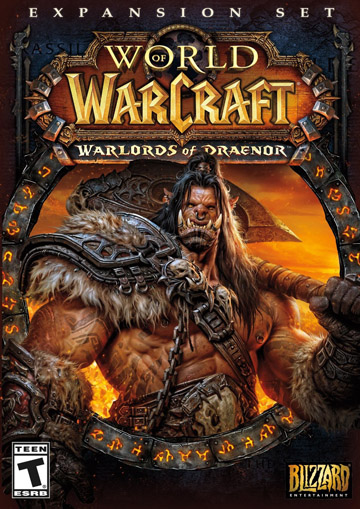
I remember the exact moment when I realized I was over World of Warcraft. I had been trying to get the "What a Long, Strange Trip It’s Been" achievement on my Mage character, which involved completing multiple "holiday" achievements that had to be completed within a certain time frame. I had only one thing left to go, which was to capture the flag in a Battleground during Children’s Week while I had my orphan tagging along.
World of Warcraft contains a lot of stuff that is basically nonsense, like this quest. I guess you could call it a "take your kid to work day" for heroic fantasy adventures. But I couldn’t do it. I kept dying over and over again, and I missed the window. I realized that to get the main achievement I would now have to wait an entire year until the next Children’s Week came along.
There were a lot of things leading up to my leaving the game, but that was the last straw. I cancelled my subscription.
I had been playing World of Warcraft for about five years at that point, and I felt I’d done everying I could do in the game. I’d quested, levelled up professions, explored the world as a Death Knight riding a goblin motorcycle, did player-versus-player combat in both the open world and in ranked battlegrounds, ran dungeons and a few raids, and lastly tried to get all the seasonal achievements. I had over a dozen characters strewn across multiple servers. It felt like it was enough. At some point, all games have to end, even MMOs.
But Blizzard managed to suck me back in with their latest expansion, Warlords of Draenor. It’s chock full of Warcraft nostalgia-- the main plotline involves going through a new Dark Portal to a Draenor that hasn’t been destroyed, thanks to some time-travelling intervention by the outlaw orc leader Garrosh Hellscream. The weird thing is that if you still have some lower-level characters (like I do), the old destroyed Draenor from Burning Crusade is still there, accessible through the old Dark Portal, as if time had never been altered. Maybe it’s a quantum thing. Trying to figure out all the lore of the game over its ten-year span is enough to make your head hurt.
The biggest and best new feature in the game is the garrison. This is a base that you get to construct on the new Draenor that is evocative of the old Warcraft Real-time Strategy games: you start with a Town Hall and build a Barracks, and even though the building time is stretched out over many days, it still feels a little bit like Warcraft III.
Blizzard has this amazing ability to keep refining tiny little details that improve the player’s quality of life. For example, you always used to have to hover over junk that you retrieved from dead monsters to see if it was, in fact, junk. Now, anything that can be sold to a vendor and has no other use is marked with a tiny little gold coin on the icon. In the past, you had to group up with other players even if you just wanted to kill a single elite monster in the open world. Now, if you happen to be fighting the monster and someone else joins in, you both get the credit and get the loot automatically.
It’s like coming back to a country that you last visited three years ago, and finding that everything is just a little bit nicer and a little bit easier to get around in.
I’ve missed being here. It feels nice to be back.
Views: 7872
Emulating the past: a digital visit from my teenaged self
Post #: 229
Post type: Blog post
Date: 2021-07-09 23:54:14.000
Author: Jeremy Reimer
Tags: Gaming
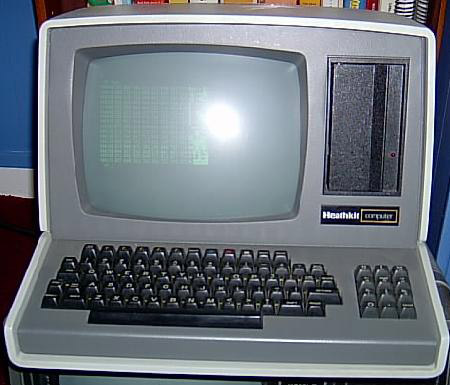
Last week I read an abolutely amazing article on retro computing. The author took a trip through the world of emulation, making stops at significant signposts in computing history such as the Amiga, LISP machines, and the NeXT computer. In doing so, he also found a way back to his childhood. I was deeply moved by this article and it inspired me to do a little emulating of my own.
But first, a little backstory. My father introduced me to computers for the first time, teaching me the basics of BASIC when I was just six years old, sitting on his knee in front of a terminal connected to the VGH mainframe. But it was my uncle, Allan Symonds, who provided a portal to personal computers. He had a mysterious all-in-one machine called a Heathkit H-89, and I fell in love with the big grey beast. I remember, with perfect clarity, one morning in December of 1979. We had celebrated Christmas at Uncle Allan’s house, and I had spent most of my time on the computer. My father tried to tell me we had to go. I pleaded for more time-- when else would I ever get to use this computer again?
"You can use it again when you get home," my father said. "That’s not Uncle Allan’s computer. That’s your computer."
My jaw dropped. My seven year-old brain couldn’t even comprehend it.
But it was true.
I had that Heathkit between the ages of seven and seventeen, and I absolutely loved it. It was an oddball sort of computer, running an operating system called CP/M by this tiny company known as Digital Research. There weren’t that many games for it: my uncle gave me copies of Space Invaders, Missile Command, Space Pirates, and a Pac-Man-like game called Munchkin. Those were almost all the games that existed for that machine. I wanted more, but I figured I would have to write them myself. This was hard. I tried to learn assembly language, the only language fast enough to write games for such a slow machine, but I didn’t have the patience. I tried to learn C and Pascal, but compiling a simple "Hello, World" took about twenty disk swaps in the single floppy drive. There was only one language that I felt I could work with, and it was one that I already knew. It was from a tiny company as well, an outfit known back then as Micro-Soft.
Micro-Soft’s BASIC, or MBASIC for short, was an interpreted language that only took up about 25 kilobytes out of a 95 kb floppy. That left plenty of room for a game, but there were drawbacks. Being interpreted meant it was slow. Extremely slow. Fortunately, the manual had all sorts of helpful hints for increasing speed, such as typing DEFINT A-Z to force all variables to be integers. Who had time for floating point?
I figured out other optimization strategies over time. The Heathkit was a monochrome machine, and it had no bitmapped graphics. Instead, you could use a special escape code, CHR$(27);"F", to go into "graphics mode". In this mode, lower-case letters were displayed as a series of shapes: "y" was a diagonal line, "p" was a small rectangle, and so forth. You could use "reverse video" to flip the shapes’ pixels between light and dark. Other escape codes let you position the cursor anywhere on the 80 column by 25 line display. It wasn’t much, but it was enough to make crude games, and that’s all I ever wanted.
I asked Uncle Allan for help with writing my games in BASIC, and he taught me all about the Main Loop, the basic structure of all game programming that is still around today. Thanks to him, I was able to move on from just drawing pictures and start writing actual games. 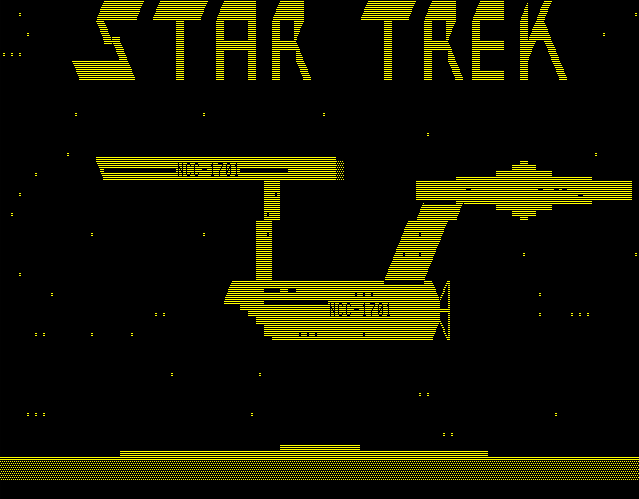
I started many games in those years, but I finished relatively few. One of the ones I did finish was a Star Trek game where you commanded the USS Enterprise through a galaxy full of angry Klingons. It was insanely difficult. You had to time your commands perfectly to raise and lower shields, maneuver at impulse and jump to warp speed. Klingons would swarm you and could hit you from any direction, whereas you could only shoot forward. Even with your shields up, if you got hit you would lose energy, and if you ran out of energy you would die. If you tried to quickly warp out without knowing what was ahead of you, you would probably run into a star.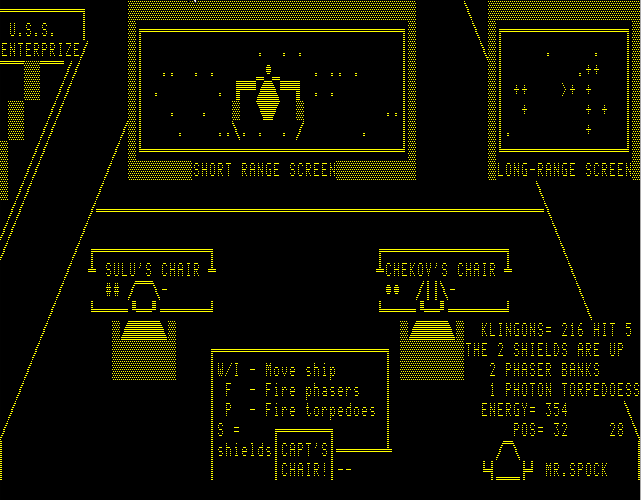
I remember beating it with great difficulty back then and feeling quite proud of myself. I can’t beat it today without modifying the code to make it a little less insane.
One of the last games I ever wrote on the Heathkit was based on the TV show Max Headroom, a series that I was completely in love with back then and still am today. I only ever completed the first stage: a daring helicopter run to Network 23. I wanted this game to have the best graphics I’d ever seen on a Heathkit. I wanted three-way parallax scrolling, so the buildings in the foreground would scroll more quickly. I wanted the helicopter to be superimposed on these scrolling buildings, and gunfire on top of that.
This was completely impossible and insane to even think about doing in interpreted BASIC on a 2 MHz 8-bit computer that was driving a 9600 baud terminal as its display. To the best of my knowledge, nobody ever did graphics like this on a Heathkit, not even using assembly language.
But I found a way. I used the terminal’s "delete" functions to scroll as fast as the display was able. I stored the buildings and the helicopter in string arrays, and defined them at the beginning of the program so they would be faster for the interpreter to recall. I only repainted bits of the helicopter that were broken by the scrolling boundaries. I cheated a bit and paused the action when the gun fired, then repainted the building bits. 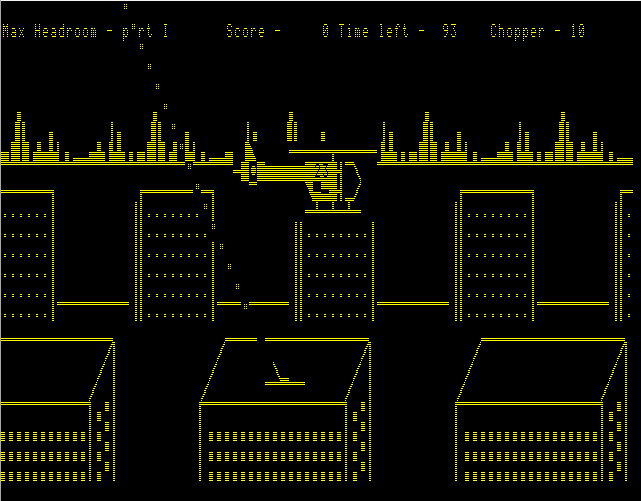
It was a bit slow, but it was a fully functional game. You would want to stay at a high altitude to avoid the guns, but nearly-invisible barriers forced you to fly lower. Your best bet was to wait for the gun to fire, then fly up and right as quickly as possible. The gun would move in an arc, so you could anticipate where it would fire next.
Not long after I wrote this game, my Heathkit died. The company itself went out of business, so repairs were impossible. I moved on to PCs, running an operating system called DOS that to me looked strangely familiar. All my old games were stored on decaying floppy disks, and I thought I would never get to see them run again. Decades passed, but I hung on to those floppies out of nostalgia if nothing else.
A couple of years ago, I found a H-89 emulator written by Mark Garlanger. I emailed him and he told me he had some success recovering images from floppy disks, so if I would like to mail him mine he would try to save what he could. I didn’t hold out much hope. I remembered my Heathkit would have problems reading disks after a few years, and it had been decades. But I mailed them out anyway.
Mark was able to recover almost 95 percent of my data.
My grandfather died in 2001, and I saw my uncle at the funeral. My father died a year later, and I didn’t see Uncle Allan there, or any time since. I have been unable to get in touch with him. The Internet and even close family members have come up with nothing. He might still be alive, but with each passing year I start to doubt it more and more. All these important people in my life are disappearing one by one, and there is nothing I can do about it.
But thanks to Mark, those years of my life, the results of all the things my father and my uncle taught me, are preserved forever with perfect fidelity. It is as if no time has passed at all. My awkward teenaged self is calling out to me, wanting to show me this cool game he just made. I wish I could call him back and tell him that everything is going to be all right, that he’ll find his way eventually, that he’ll find the love of his life and he’ll get to write novels and work for game companies and have a good life.
But maybe, somehow, he knows.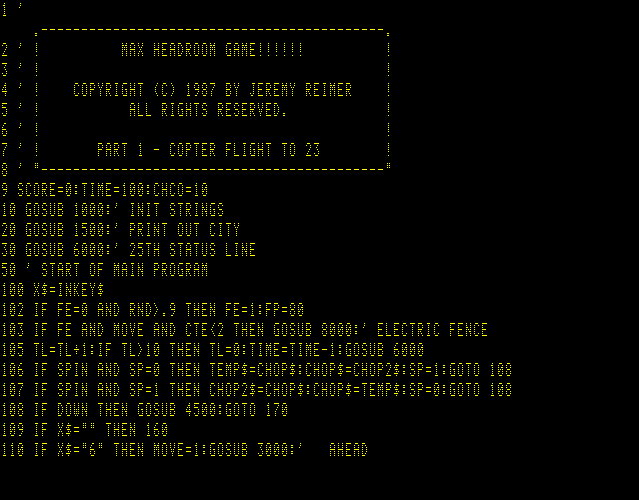
Views: 9046
Game Review - Digital: A Love Story and Analogue: A Hate Story
Post #: 228
Post type: Blog post
Date: 2014-11-04 09:03:53.000
Author: Jeremy Reimer
Tags: Gaming
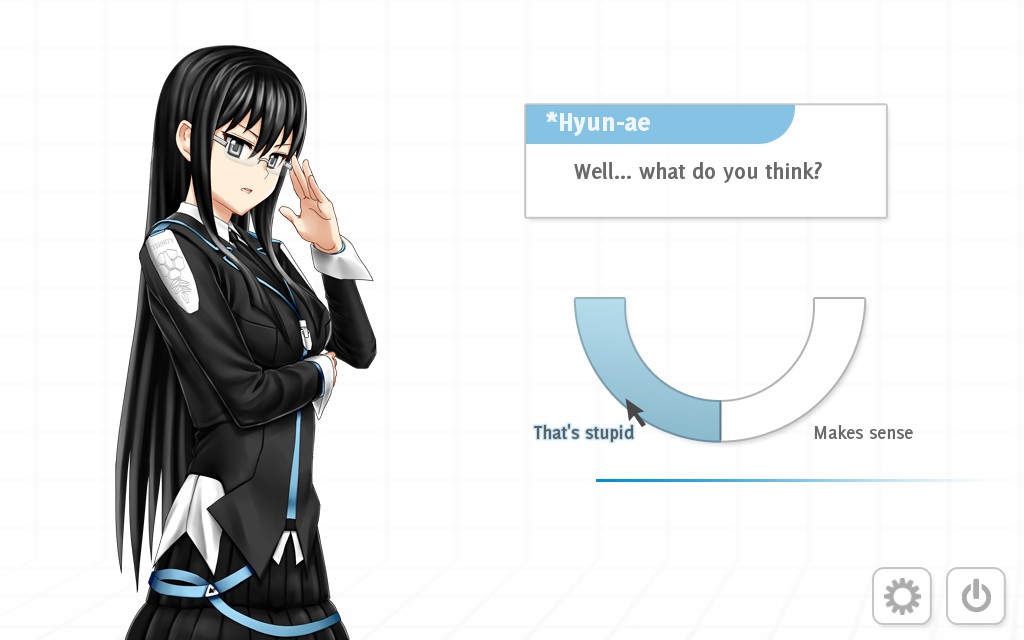
I was watching some of the PAX Australia panel footage on Twitch this weekend and caught a great stream with the BioWare team. These guys have made some of my favorite games, such as Neverwinter Nights and the Mass Effect trilogy. But as I was watching the panel I noticed something: these guys were definitely guys. Every single panel member was a white male in his mid-to-late thirties. I thought back to a panel at VCON that I had attended about Diversity in Sci Fi and Fantasy. The discussion was about how much richer life could be if we heard from a variety of different voices. Was there any diversity to be found in video games?
As if the BioWare team had heard my thoughts, one member replied to a question about his favourite gaming storytelling with a list of indie games, including "Analogue: A Hate Story". The title immediately intrigued me, and when I found out it was about a deep-space exploration mission to uncover log files from a dead, centuries-old generation sleeper ship, I was already hooked. I couldn’t get on Steam fast enough to plunk down my $10.
The gameplay in Analogue: A Hate Story switches between a Unix-like command-line interface, a log-file retrieval system that pulls out old email messages, and click-based interaction with a sentient artificial intelligence, represented by a young woman drawn in an anime style. The AI appears to be helpful, but she won’t show you all the emails at once. Instead, you have to sort through the ones that do appear and "present" them to the AI. She will then fill you in on the background details of the people inovlved and in most cases will open up additional emails by the same author.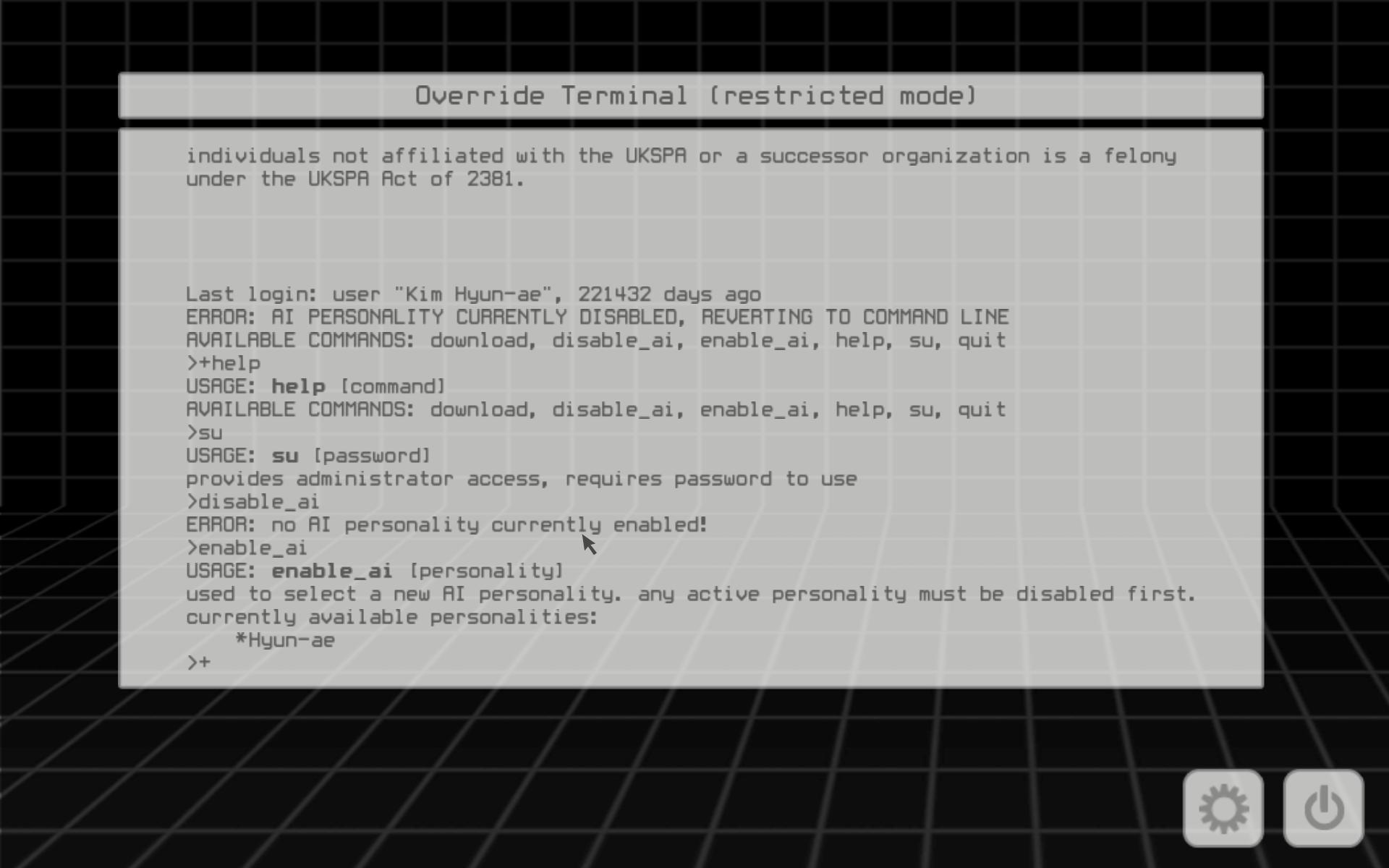
I won’t give away the ending, but I will say that it presented a society gone horribly wrong in a completely different way than I’ve ever seen in a video game. The standard plot for these "dead ship survival horror" games is that either an AI or a mad scientist (or both) decided to play God and unleashed a technological or genetic horror that destroyed the society. Nothing like that happened here, but what did happen was more personal and far more shocking.
Having completed the game in a marathon setting on Sunday, I found myself craving more. I found the author’s website and it took me to one of her earlier games: Digital: A Love Story. This had a hook that got me instantly. The game is played in a simulation of a 1988-era computer (a mash-up of a Commodore 64 and an Amiga called the "Amie") and the player interacts through dialling up a modem (complete with historically accurate connection sounds!) and connecting to various BBS (Bulletin Board Systems) to uncover a story involving a woman named Emilia. The use of historical events, like the Arpanet worm, grounds the story in reality at the same time as it ventures off into the fantastical. The use of message board posts and private messages adds an immediacy to the game-- sometimes a character will reply to you as soon as you navigate to another part of the BBS! I can’t say much about the ending other than the fact that I actually cried, and it has been a long time since a video game has moved me that much.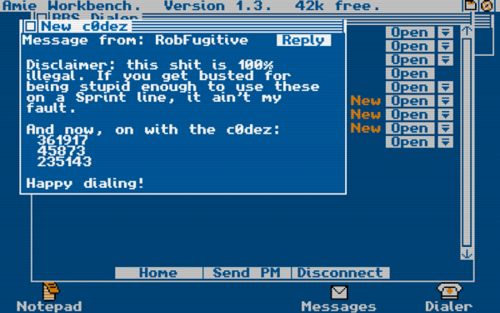
The author of these games, Christine Love, is a young woman who is a gamer and who identifies as queer. Her writing is informed by her background, but her voice is so powerful that she is able to create brilliant works of art that have profound emotional impact for anyone who plays them. She is a shining example of how diversity in creative voices enriches us all.
Analogue: A Hate Story is available for $10 on Steam for Windows, OSX and Linux.
Digital: A Love Story is a free download and is available for Windows, OSX, and Linux.
Views: 8788
Gone Home: a video game that changes what it means to be a video game
Post #: 225
Post type: Blog post
Date: 2014-06-24 12:07:59.000
Author: Jeremy Reimer
Tags: Gaming, Writing
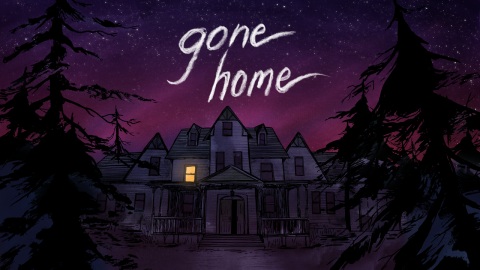
Gone Home got a lot of positive press when it was released last August, but many people bristled at the idea of paying $20 for what was ultimately a very short, if innovative, gaming experience. Yesterday I picked it up on a Steam Sale for $2.99 and enjoyed every minute of it. While I finished the game in a single evening, I found myself still thinking about it the next day, and I suspect I will continue to mull it over for some time to come. There is depth in this game, and artistry. The developers clearly had something to say, and they communicated their message in a new and unique way.
The game begins in June 1995. You are a female protagonist, Kaitlin Greenbriar, returning home after a year-long trip to Europe. When you get home, there is a note on the door from your younger sister, Sam, saying that she was sorry she couldn’t meet you. Your parents are nowhere to be seen. The combination of an empty house, flickering lights, and a howling storm outside creates a spooky atmosphere. As you move through the house you are tempted to turn on every possible light and leave them on. There are no other people to interact with in Gone Home, but a story is told through voice-overs from your sister Sam that trigger when you examine certain objects. Whether these are simply letters that Sam wrote or tapes she recorded isn’t entirely clear, but they serve as the backbone of the story. In addition to these voice-overs, there are tons of little clues strewn throughout the house: letters, invoices, detention slips, and so forth. Many objects can be picked up, examined, and even moved around the house, but only a few have significant meaning. I found myself picking up pens from drawers and leaving them on top of tables, just for fun.
As you proceed through the house you end up unlocking new sections and learning more about your sister and your parents. Your father once wrote a couple of science-fiction books involving time travel and the assassination of JFK, but fell out of favor with his publisher and ended up doing contract work writing reviews for a consumer electronics magazine. As an aspiring novelist who pays the bills as a technical writer, this resonated with me. Sam is also an aspiring writer, as you discover when you find ever-evolving stories from various point in her childhood. You also learn about Sam’s growing and complex relationship with her friend Lonnie, which becomes the driving point of the narrative.
The puzzles in Gone Home are fairly easy to solve. This isn’t like the adventure games of old where you had to find the blob of guacamole and attach it to the rubber chicken with the pulley in it, just so you could get past the annoying clown. Instead, the game rewards slow, thoughtful exploration. There are tons of objects to find in each room that give more background information about your parents and even the original owner of the spooky home. It turns out that the family had just moved into the house (packing boxes are visible everywhere) while your character was on vacation, so it makes perfect narrative sense that your character would be exploring the house for the first time. This brilliant move puts you and your character on the same footing, making the experience even more immersive.
The choice of 1995 as the time frame for the game was a deliberate one by the designers, as that was the last year before information technology became ubiquitous in family life. This also makes the game a great nostalgia trip for finding all the trappings of mid-90’s life that have since vanished: tape cassettes and recorders, VHS tapes and VCRs, Super Nintendo, and answering machines.
I loved every moment of Gone Home. Although the flash sale is over, it’s still only $4.99 from the Steam Store, and it runs on Windows, Mac OSX, and Linux, so there’s no excuse for you not to play it!
Views: 6305
So who am I?
I'm a writer and programmer. I write science fiction stories and novels.
I am the writer for the upcoming documentary series Arcade Dreams.
I also write technology articles for Ars Technica.
I'm the creator of newLISP on Rockets, a web development framework and blog application.
- Email: jeremy.reimer@gmail.com
Topics
3D Modeling
About Me
Amiga
Articles
Audio
Blockchain
Blog
Blogs
Book Reviews
Book review
Comics
Computers
Computers Microhistory
Computing
Conventions
Crypto
Daily update
Entrepreneur
Family
Forum post
Gaming
Gaming Starcraft
Gaming metaverse
Internet
Jeremy Birthday
Kickstarter
Knotty Geeks
Knotty Geeks (video)
Market Share
Masters Trilogy
Monarch
Movies
My Non-Fiction
My Science Fiction
NewLISP Blog
Novels
OSY
Operating Systems
Pets
Poll
Reviews
Science Fiction
Servers
Software
Software Operating Systems
Space
Star Gamer
Star Trek
Starcraft
Television
Testing
Toys Childhood
Wedding Marriage
Work
Work Life
World
Writing
 RSS Feed for this blog
RSS Feed for this blog